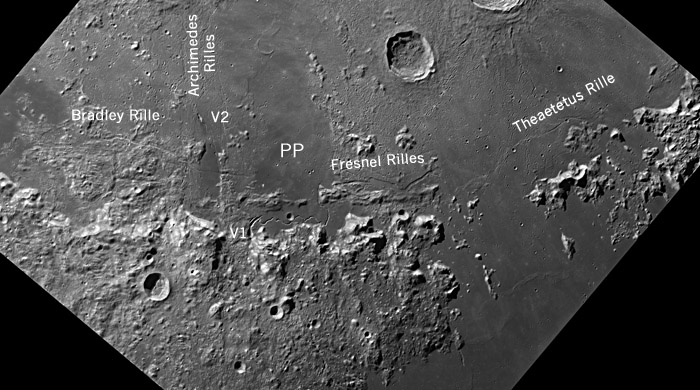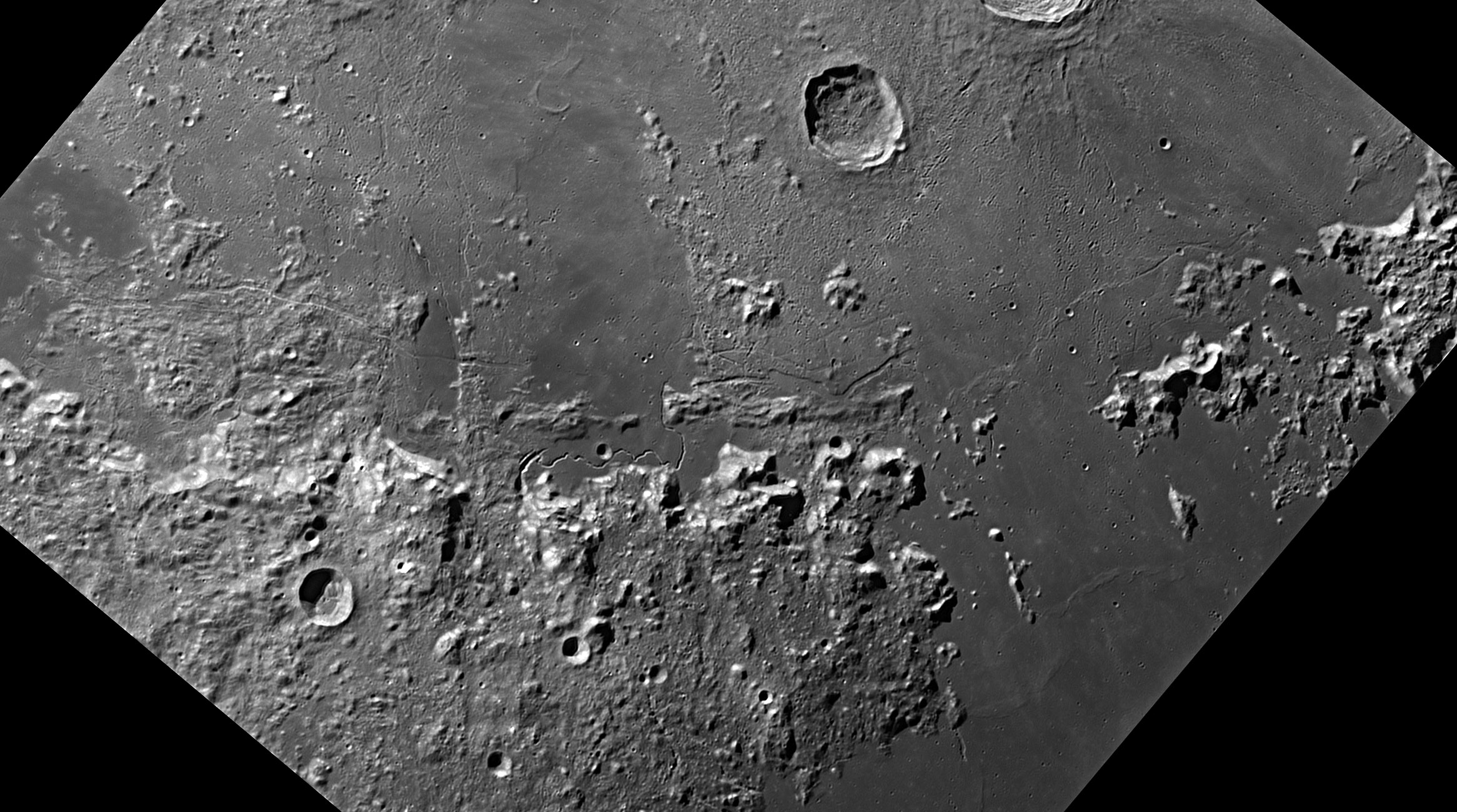Difference between revisions of "January 3, 2014"
(Created page with "__NOTOC__ == <!-- ws:start:WikiTextHeadingRule:0:<h1> --> <!-- ws:start:WikiTextLocalImageRule:14:<img src="/file/view/LPOD-Jan3-14.jpg/480326938/LPOD-Jan3-1...") |
|||
| Line 1: | Line 1: | ||
__NOTOC__ | __NOTOC__ | ||
| − | == | + | =Watching the Other Rilles= |
<!-- ws:start:WikiTextHeadingRule:0:<h1> --> | <!-- ws:start:WikiTextHeadingRule:0:<h1> --> | ||
| Line 6: | Line 6: | ||
<em>north to upper-right image by [mailto:christian.viladrich@neuf.fr Christian Viladrich], France</em><br /> | <em>north to upper-right image by [mailto:christian.viladrich@neuf.fr Christian Viladrich], France</em><br /> | ||
| + | <table class="wiki_table"> | ||
| + | <tr> | ||
| + | <td><!-- ws:start:WikiTextLocalImageRule:15:<img src="/file/view/LPOD-Jan3b-14.jpg/480327084/LPOD-Jan3b-14.jpg" alt="" title="" /> -->[[File:LPOD-Jan3b-14.jpg|LPOD-Jan3b-14.jpg]]<!-- ws:end:WikiTextLocalImageRule:15 --><br /> | ||
</td> | </td> | ||
<td>The Apennine Mountains are the most prominent part of the rim of the Imbrium impact basin. The scarp front of the Apennines is equivalent to the scarps below the rim crests of fresh craters like Tycho and Copernicus - it marks where giant landslides occurred, with debris that slid downslope being visible piled at the bottom of the scarp. Linear ridges of debris, such as near the bottom of Palus Putredinis (PP), between the Fresnel Rilles and the scarp, and near the Theaetetus Rille, may be the tops of terraces whose lower parts are buried by lavas. The material near the Bradley rille may be more jumbled, although lineations parallel to the terrace ridges are detectable. The Bradley Rille formed after the slumped material was emplaced for it cuts it as a normal, flat-floored rille. I suggest that it and the Fresnel and Theaetetus rilles formed as concentric rilles, similar to those around Serenitatis and Tranquillitatis, as the basin floor subsided and the basin edge bent downward and fractured. The vent (V1, [http://the-moon.wikispaces.com/Jomo Jomo]) for the Hadley rille started along the scarp of the Apennines, presumably because the fracture provided a conduit for rising magma. Another elongated vent (V2, [http://the-moon.wikispaces.com/Kathleen Kathleen]) for a shorter sinuous rille does not seem associated with basin concentric fractures but with the nearly perpendicular ones indicated by many older thin Archimedes Rilles.<br /> | <td>The Apennine Mountains are the most prominent part of the rim of the Imbrium impact basin. The scarp front of the Apennines is equivalent to the scarps below the rim crests of fresh craters like Tycho and Copernicus - it marks where giant landslides occurred, with debris that slid downslope being visible piled at the bottom of the scarp. Linear ridges of debris, such as near the bottom of Palus Putredinis (PP), between the Fresnel Rilles and the scarp, and near the Theaetetus Rille, may be the tops of terraces whose lower parts are buried by lavas. The material near the Bradley rille may be more jumbled, although lineations parallel to the terrace ridges are detectable. The Bradley Rille formed after the slumped material was emplaced for it cuts it as a normal, flat-floored rille. I suggest that it and the Fresnel and Theaetetus rilles formed as concentric rilles, similar to those around Serenitatis and Tranquillitatis, as the basin floor subsided and the basin edge bent downward and fractured. The vent (V1, [http://the-moon.wikispaces.com/Jomo Jomo]) for the Hadley rille started along the scarp of the Apennines, presumably because the fracture provided a conduit for rising magma. Another elongated vent (V2, [http://the-moon.wikispaces.com/Kathleen Kathleen]) for a shorter sinuous rille does not seem associated with basin concentric fractures but with the nearly perpendicular ones indicated by many older thin Archimedes Rilles.<br /> | ||
Revision as of 22:42, 1 January 2015
Watching the Other Rilles
north to upper-right image by Christian Viladrich, France
 |
The Apennine Mountains are the most prominent part of the rim of the Imbrium impact basin. The scarp front of the Apennines is equivalent to the scarps below the rim crests of fresh craters like Tycho and Copernicus - it marks where giant landslides occurred, with debris that slid downslope being visible piled at the bottom of the scarp. Linear ridges of debris, such as near the bottom of Palus Putredinis (PP), between the Fresnel Rilles and the scarp, and near the Theaetetus Rille, may be the tops of terraces whose lower parts are buried by lavas. The material near the Bradley rille may be more jumbled, although lineations parallel to the terrace ridges are detectable. The Bradley Rille formed after the slumped material was emplaced for it cuts it as a normal, flat-floored rille. I suggest that it and the Fresnel and Theaetetus rilles formed as concentric rilles, similar to those around Serenitatis and Tranquillitatis, as the basin floor subsided and the basin edge bent downward and fractured. The vent (V1, Jomo) for the Hadley rille started along the scarp of the Apennines, presumably because the fracture provided a conduit for rising magma. Another elongated vent (V2, Kathleen) for a shorter sinuous rille does not seem associated with basin concentric fractures but with the nearly perpendicular ones indicated by many older thin Archimedes Rilles.
|
COMMENTS?
Click on this icon File:PostIcon.jpg at the upper right to post a comment.




